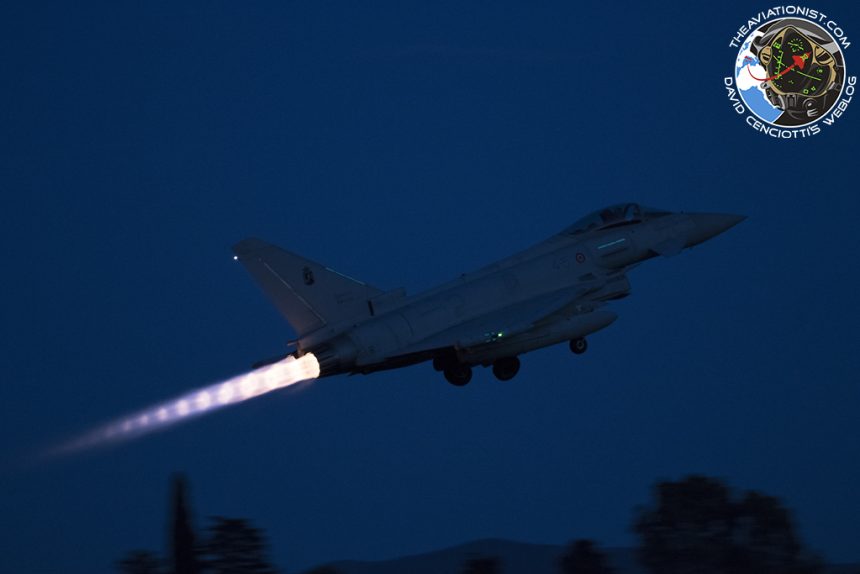Eurofighter Typhoons taking off in full afterburner at night are always a great sight.
Within the Italian Air Force, five squadrons (or Gruppi – in Italian) belonging to three wings (Stormi) based at three MOBs (Main Operating Bases) are equipped with the Eurofighter Typhoon: the 9th and 20th Gruppo (with the latter being the type’s Operational Conversion Unit, in charge of the training of all the Italian pilots destined to the Eurofighter fleet) with the 4th Stormo at Grosseto; the 10th and 12th Gruppo with the 36th Stormo at Gioia del Colle; and the 18th Gruppo at Trapani. The Italian Typhoons routinely operate together and take part in exercises, QRA shifts (both at their homebase and, on a rotational basis, at Istrana DOB [Deployment Operating Base], as well as real operations as part of “Task Forces”, where personnel are fully integrated.
For instance, four F-2000As (as the Typhoon is designated in Italy) are currently deployed to Mihail Kogalniceanu Air Base in southeast Romania, where they will remain until Aug. 28, 2019, as part of the “TFA (Task Force Air) 4th Wing” providing QRA (Quick Reaction Alert) duties in support of the Romanian Air Force MiG-21 jets. At the same time, four F-2000A jets and personnel from all the Eurofighter units are currently deployed to Ahmed Al Jaber airbase, Kuwait, to support the multinational campaign against Daesh in Iraq and Syria as part of “Prima Parthica”, as the Italian Armed Forces operation is dubbed at national level.
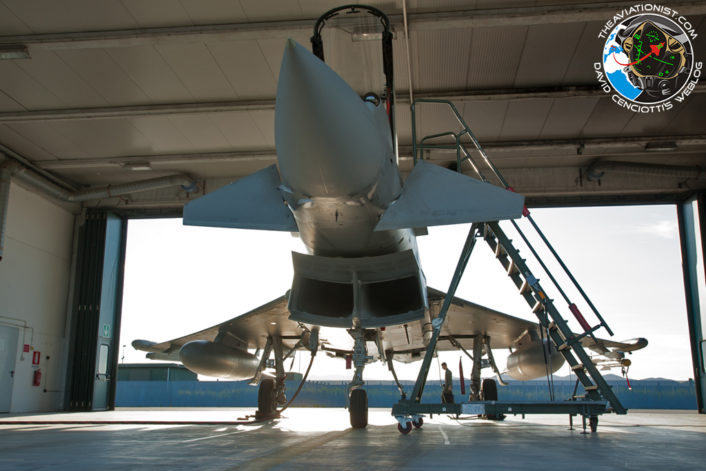
Whilst common training and full standardization ensure that aircrews of all the Wings can operate together both at home and abroad, among them, the 4th Stormo is without a doubt the most experienced Eurofighter unit in the ItAF and one of the units of reference at international level among the Typhoon partner nations. As often explained in the past, in some 15 years of flying activity since the first new aircraft was taken on charge on Mar. 16, 2004, its two squadrons have grown a significant experience with the Typhoon; a valuable know-how in the air superiority role, ratified by many achievements and records, that has also made the Stormo a recognized leader in the process of optimizing the weapon system.
With that in mind, last week we visited again Grosseto Air Base, where this author had the opportunity to experience a flight in the Typhoon three years ago (here, you can read a report about that epic 4 vs 3 mission), to observe the Wing’s night flying activities on a pretty ordinary day. Two missions were planned for the night: a two-ship and a three-ship, both launching after sunset, around 21.05LT.
Fortunately, the two-ship Typhoon mission was planned to start with a high-performance take-off.
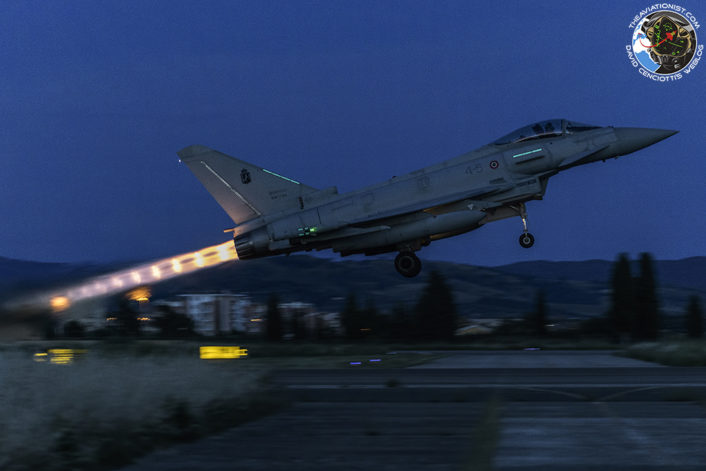
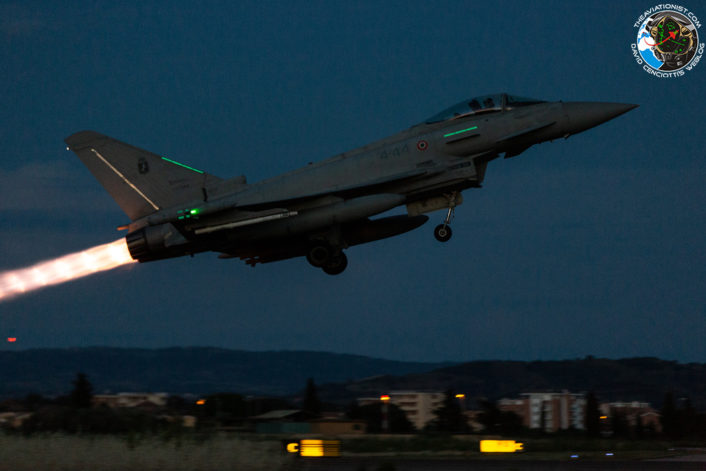
The high-performance take off is type of departure used for QRA launches: the aircraft uses full AB (afterburners) during the takeoff roll and subsequent climb to reach high altitude as fast as possible.
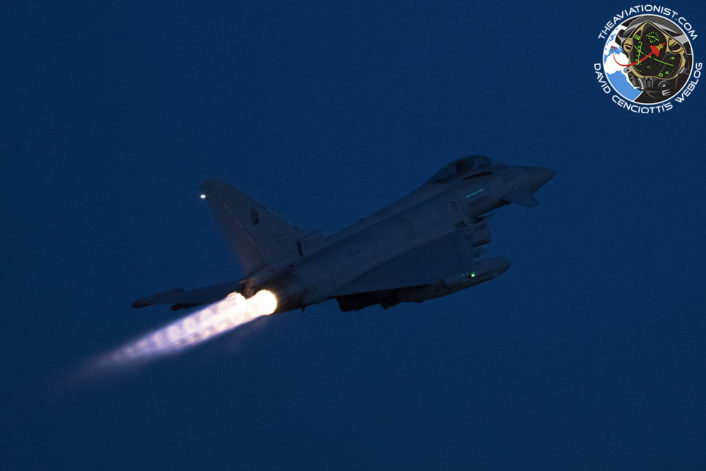
The visual effect of a reheat exhaust flame glowing in the dark is always pretty impressive, isn’t it?
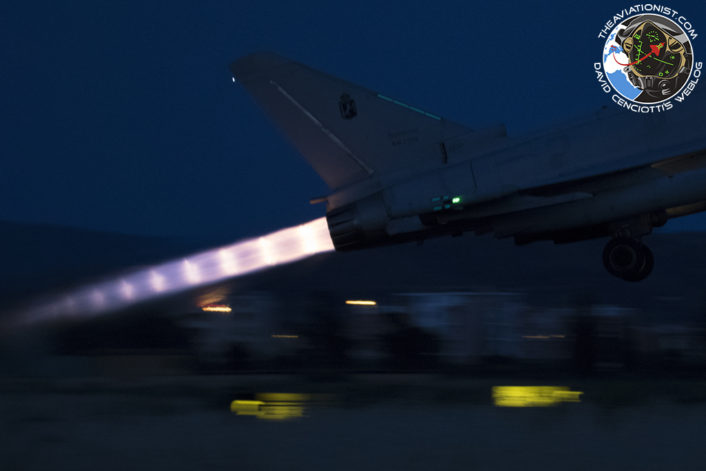
All the aircraft taking part in the night sorties were recovered inside in the “soft shelters” located in the northwestern part of the airport, where we also found the special colored two-seat Typhoon TF-2000A MM55168/”4-37″, the very first Italian Typhoon trainer painted with a special color scheme since the type was introduced back in 2004. The special, designed by Silvano Mainini and Andrea Scomparin (who are also behind many other famous special colors including two of those presented in 2017), made its first public appearance last year, when the Italian Air Force celebrated the 100th anniversary of four of its squadrons (20th, 21st, 22nd and 23rd Gruppo) at Istrana airbase, in northeastern Italy, on May 11, 2018.
One year later, part of the special colored overlay has peeled off the aircraft, even though the aircraft still keeps its striking look.
View this post on Instagram

